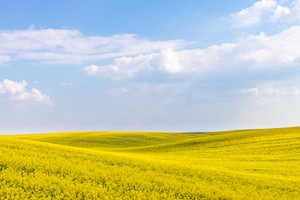Canola producers across Kansas have faced challenges over the past year due to a lack of rain and moisture. Now, Kansas State University canola breeder Mike Stamm is providing insight into how others can help their crop survive the harsh winter season.
Stamm notes that canola’s growing point should ideally be close to the soil surface, as this will provide the most protection. Last fall, a lack of moisture in planting zones made it difficult for canola producers to pinpoint the best time to seed. Luckily, a rise in moisture and above-average temperatures last October allowed many canola plants to catch up. Most were able to reach optimum growth last fall.
“For the most part, the canola I saw across [Kansas] was in excellent shape going into the winter months,” Stamm told K-State Research and Extension News. “[Winter survivability] is a balance of genetics to increase the chances of survival and planting on time to avoid excessive fall growth.”
For producers who have concerns about the challenging winter conditions, Stamm has suggestions for checking whether canola crop defenses are holding up against the cold. Canola with low crowns should prostrate to the soil surface. If the plant appears to maintain a green, firm crown when squeezed, it has not been winterkilled.
“If you’re starting to see some whitening of the stem tissue or the crown, or the stem is really squishy when you squeeze it, then you could potentially have some winterkill further down the line,” Stamm added.
In many instances, a canola field will be able to survive self-thinning and winterkill when it is scattered throughout a field, as other plants compensate. More information for Kansas canola producers can be found by contacting a local extension office.
